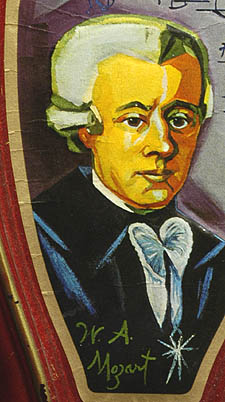
Commodification & Kitsch
![]()
In the drawing-room culture of the late-eighteenth century, sentimentality
and sensibility loomed large. The cult of sensibility prescribed a code
of conduct, particularly with regard to individuals’ reactions to
art and culture. Displaying the right sentiment in response to the contemplation
of art proved taste, education and class. Emotions became stylized into
mannerisms; education was commodified in the possession of art, and art
was commodified in kitsch.
In the “emotional playspace” that kitsch represents, we can experience heightened emotions without fear of the consequences. Within kitsch, emotions can be safely indulged—circumscribed and prescribed. Represented by classics in art, emotions become safe.
The kitsch industry was an outgrowth of the Kenner und Liebhaber (dilettante and amateur) market, intimately tied to the drawing room. Bildung (education) became the main indicator of class. Music making, commonly centered around the piano, was the safe and appropriate pastime of ladies in the drawing rooms. It was the forum for the exploration of emotions as well as the display of one’s own appropriate sensitivity.
Mozart spoke to this domestic setting not only through his music, but also through his image. The Mozartian image as a representation has gathered connotations intimately tied to the self-understanding of the bourgeoisie. Bildung and Bürgertum (bourgeoisie), emotion and composure, come together in the image of Mozart. His music is accessible and clear, it is popular, yet its high standard is impossible to deny.
Mozart’s image is manifold. It ranges from the dark, sinister and unconventional connotations of Don Giovanni to hints of seriousness and exclusivity, from an air of indulgence to an awareness of tradition and perfection—the image of the classic. The darkness of the Requiem, the melancholy of the G minor symphony, and the delightful tinkling of Papageno’s music-box arias, as well as the sparkle of the ubiquitous "Kleine Nachtmusik," not to forget the romanticism of his Piano Concerto K. 467: Mozart encompasses all emotions.

Copyright
© 2002 Division of Rare & Manuscript
Collections
2B Carl A. Kroch Library, Cornell University, Ithaca, NY, 14853
Phone Number: (607) 255-3530. Fax Number: (607) 255-9524
For
reference questions, send mail to:
rareref@cornell.edu
If you have questions or comments about the site, send mail to: webmaster.